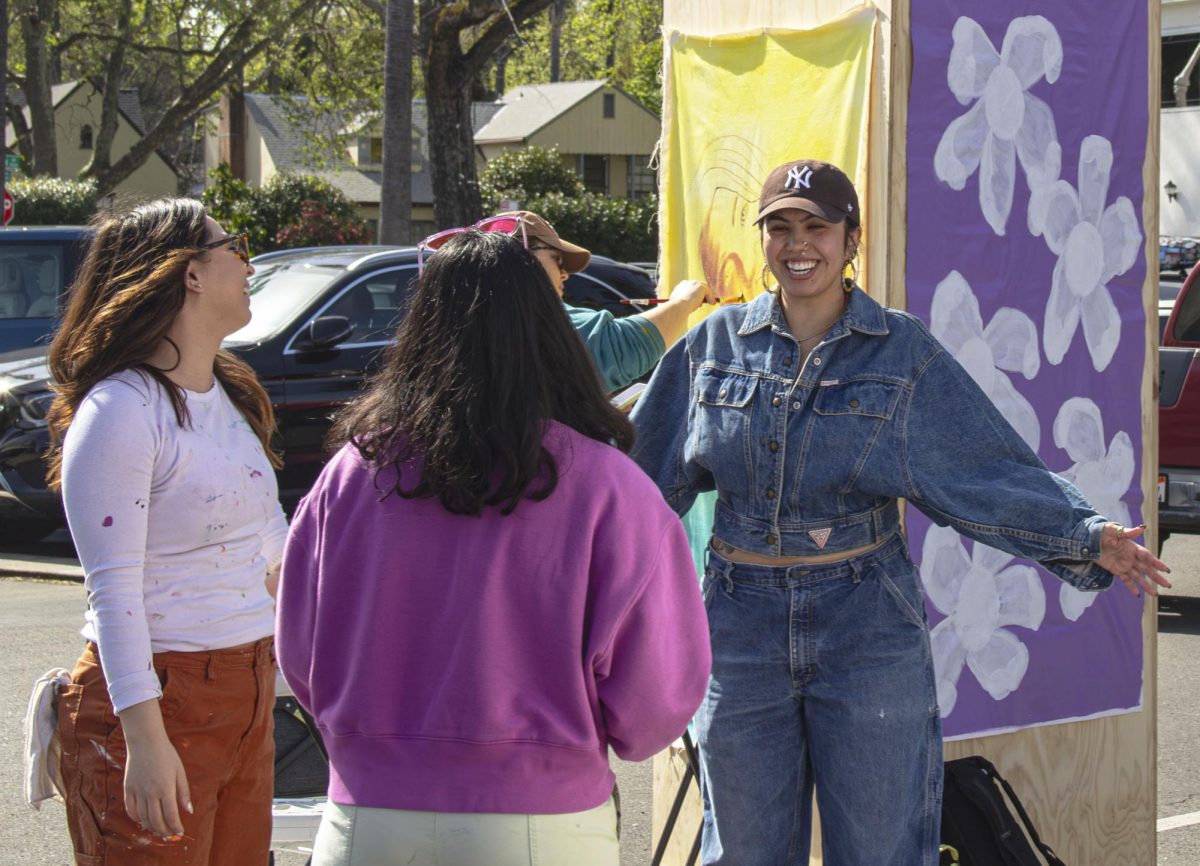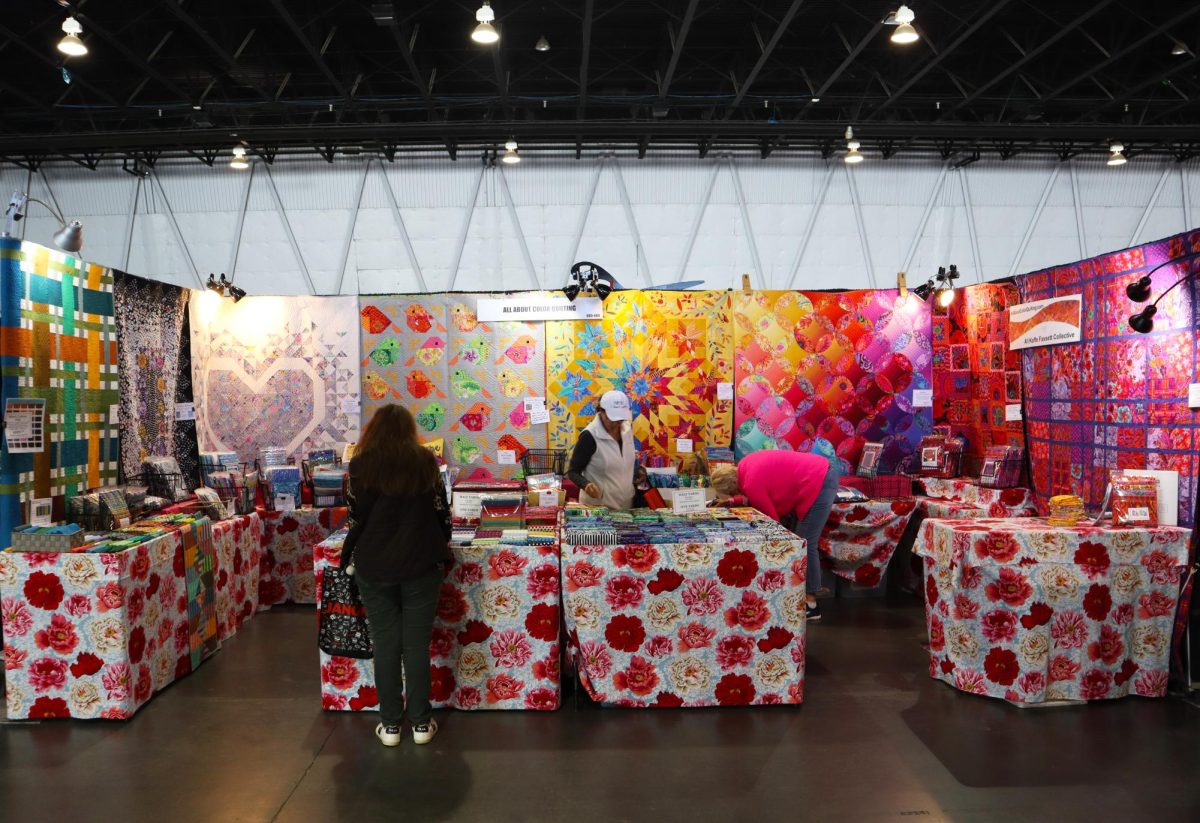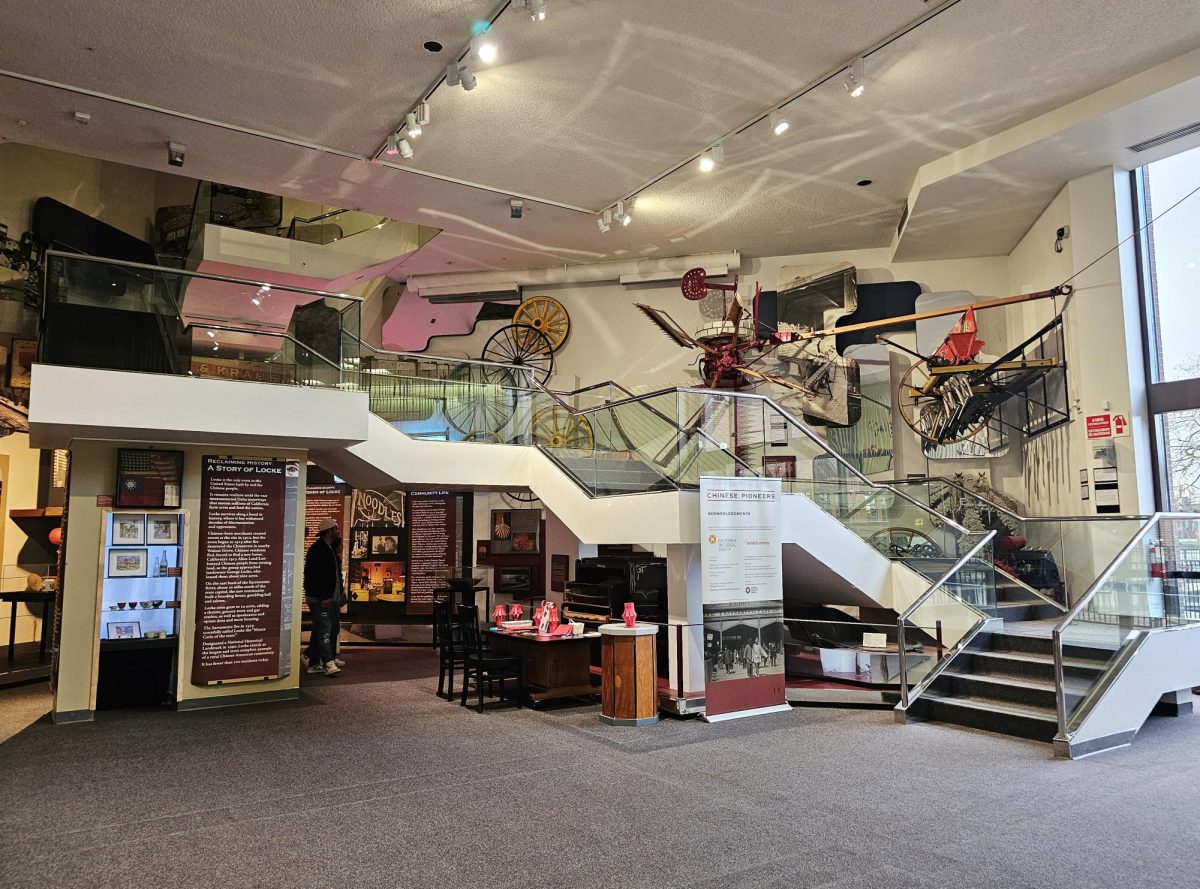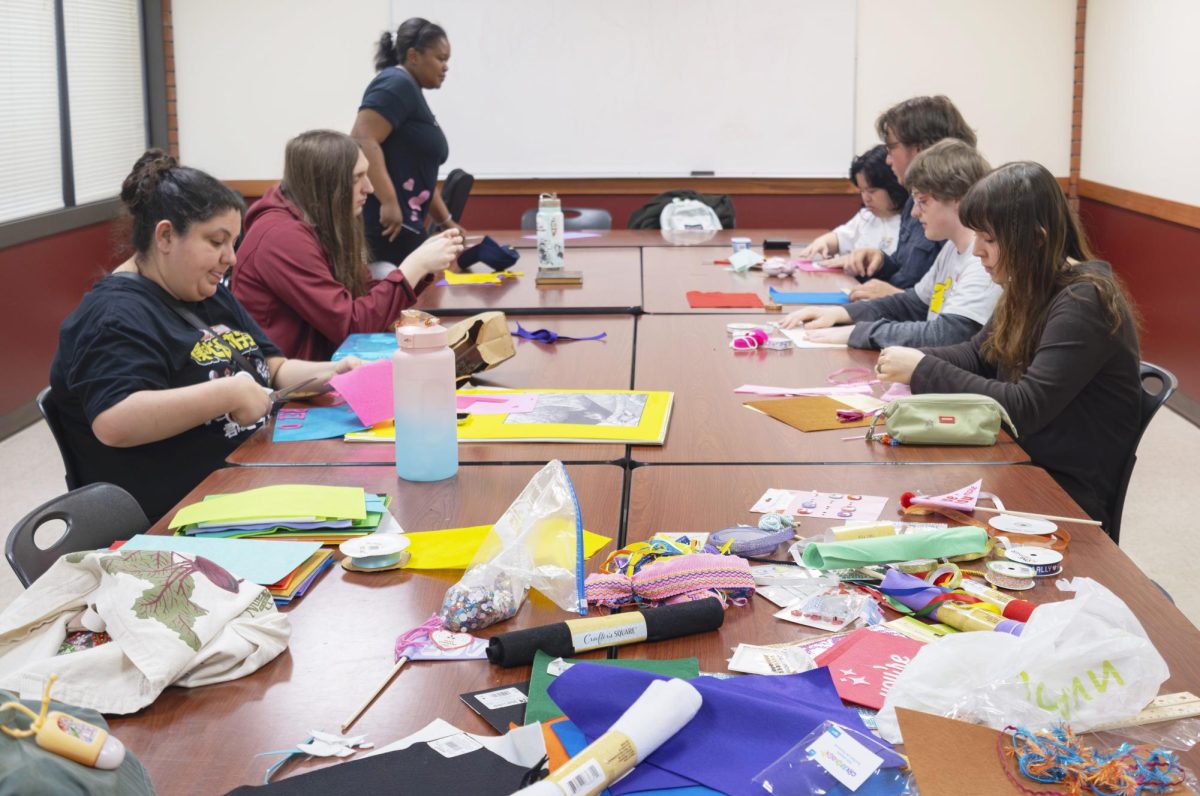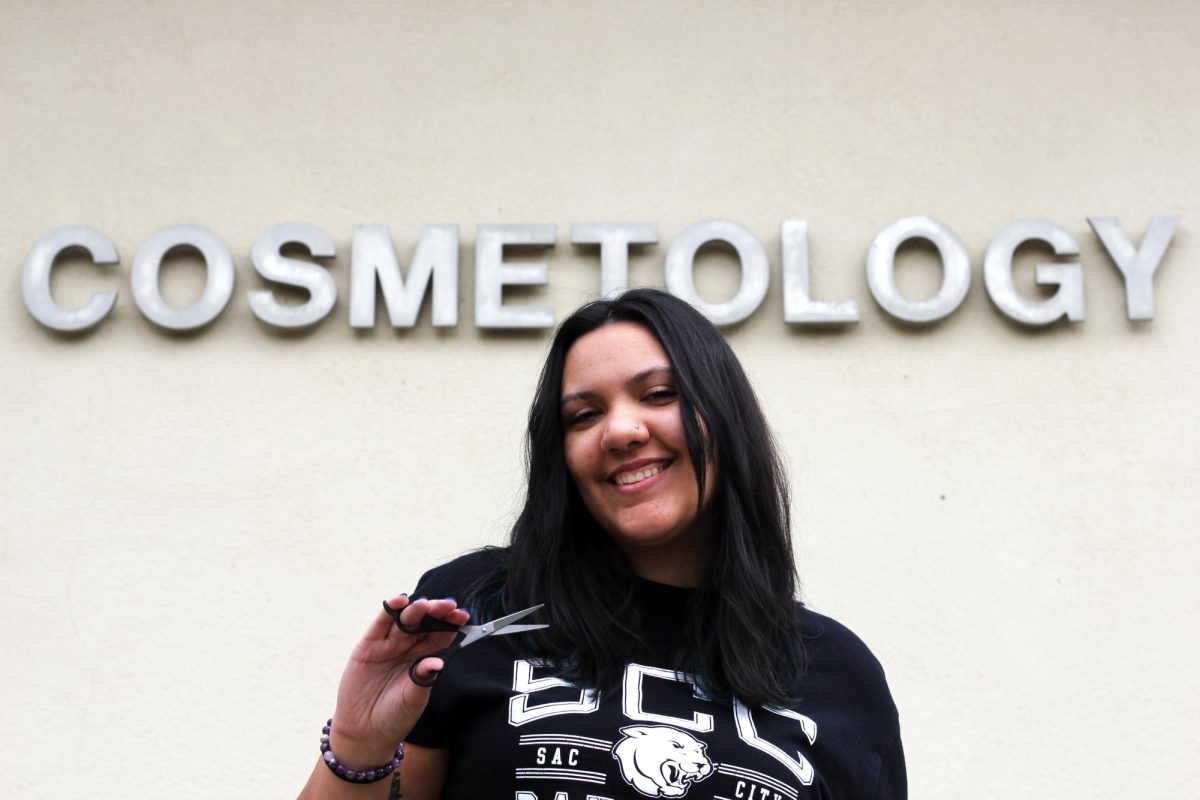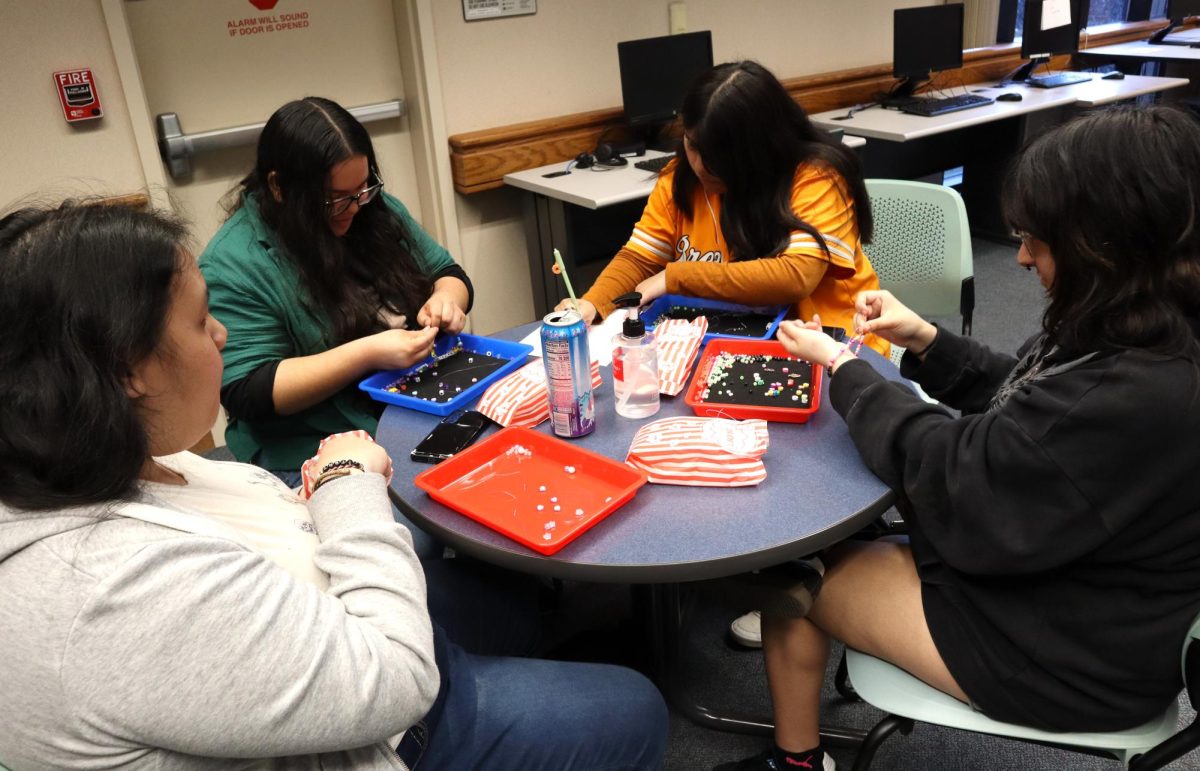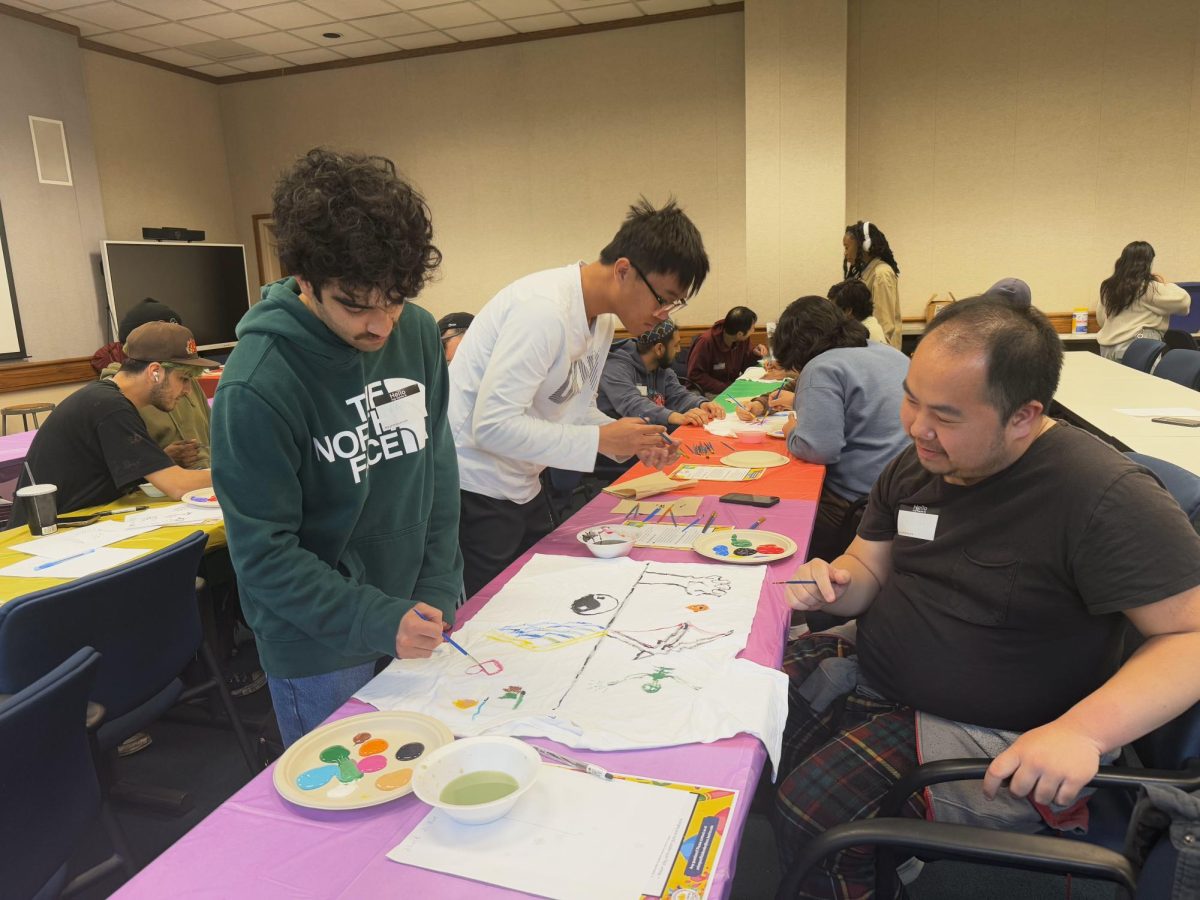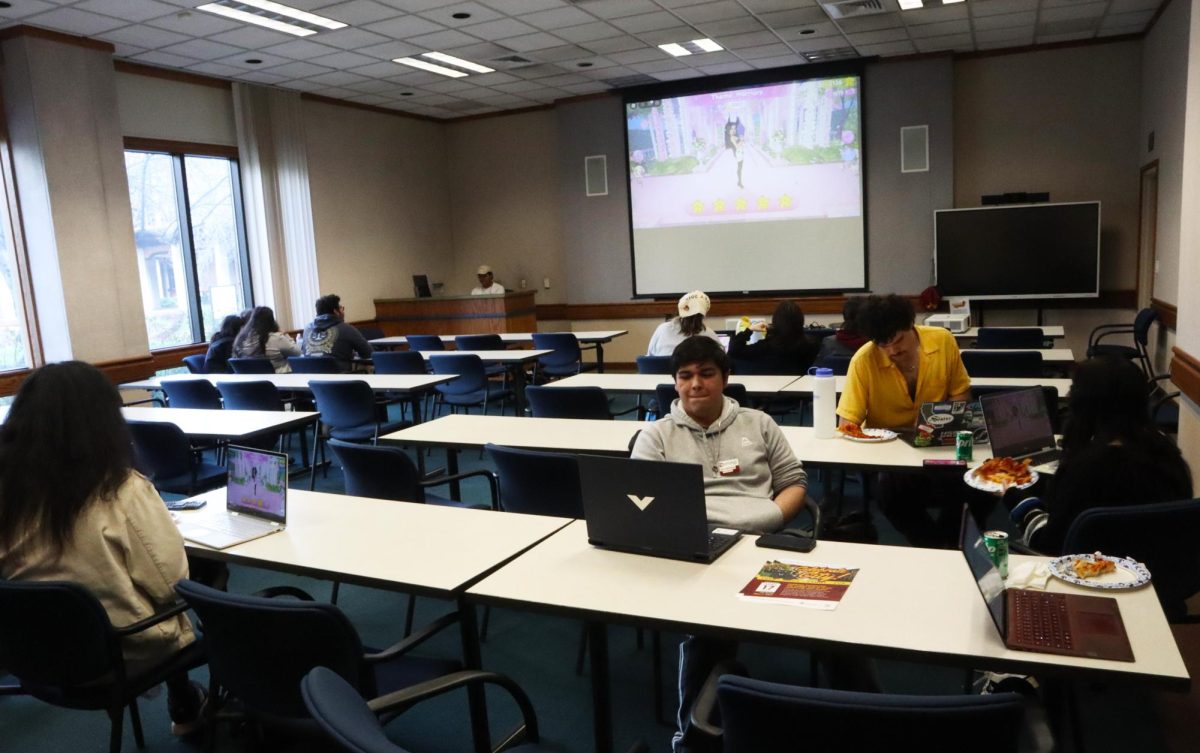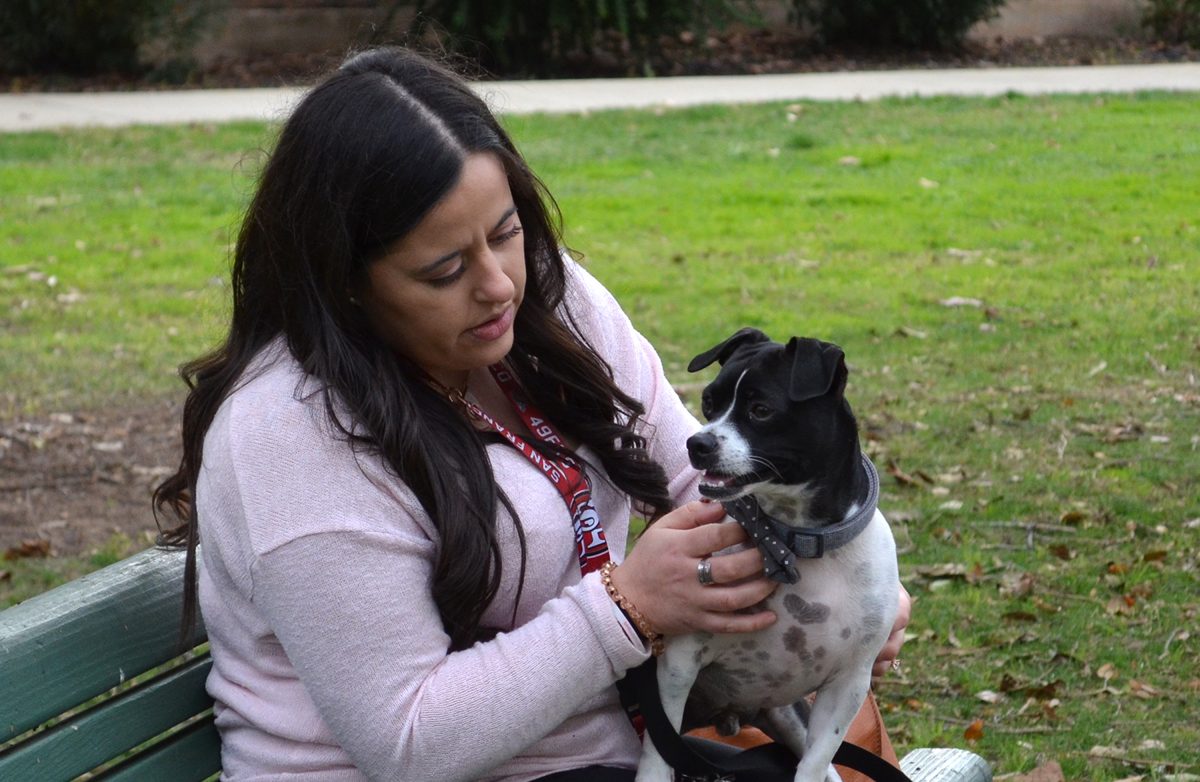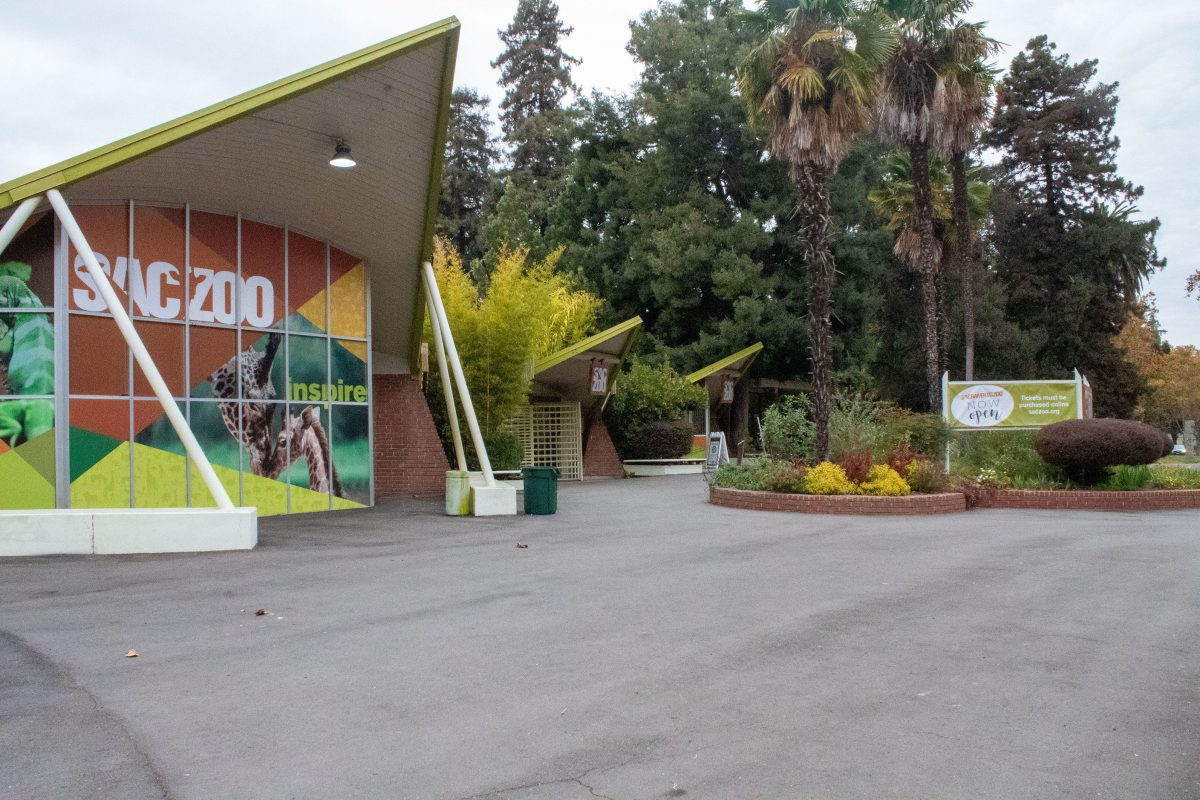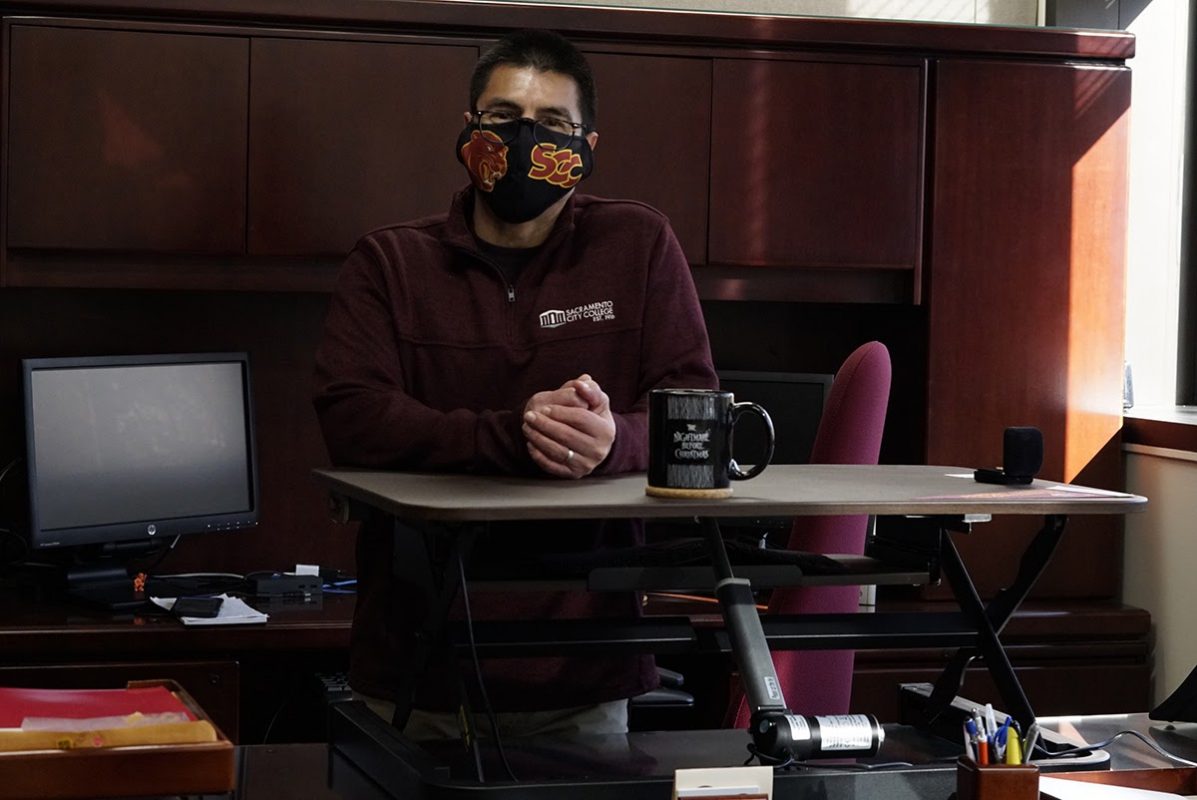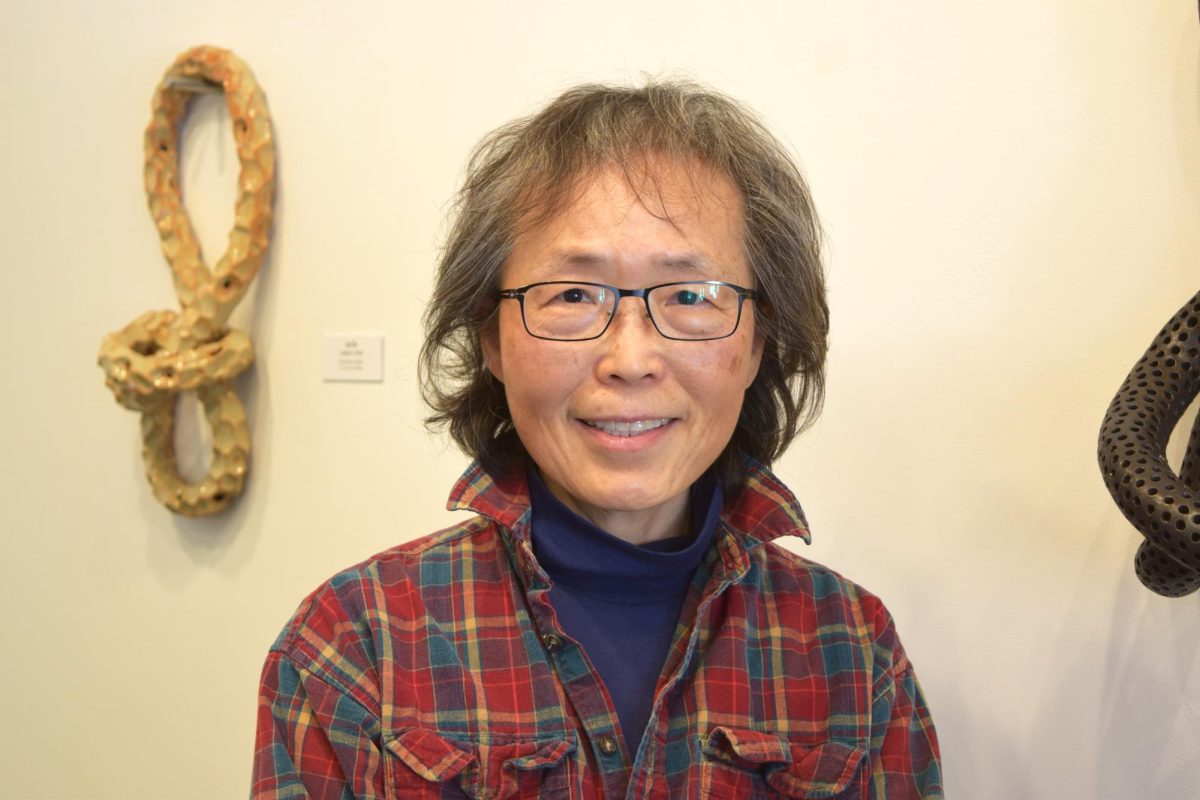Co-written by Amaya Torres | Features Editor | atorres.express@gmail.com
Though renowned landscape artist Gregory Kondos died March 26 at age 97, the painter literally left his mark in frames not only in galleries but also mounted on the walls of the townhome he shared with his wife, Moni Van Camp Kondos.
According to Van Camp Kondos, her husband’s regular trips to and from the studio below the townhouse resulted in smudges of Kondos’ signature color in many places. Kondos’ 2013 retrospective show at the Crocker Art Museum was named “A Touch of Blue” by the museum’s curator, Scott Shields.
“Gregory transferred the blue everywhere. I said, ‘Scott, you must have looked at our light switches,’ because Greg always had blue on his fingers,” said Van Camp Kondos. “That was his color. I even found two more slippers with rubber bottoms yesterday at the front door that he would wear down to his studio then bring blue up onto the staircase. There were a few more touches of blue.”
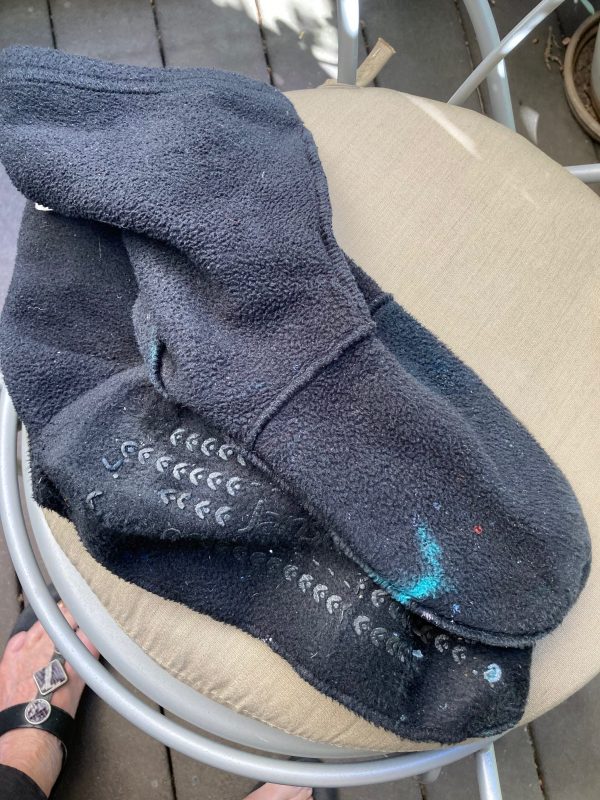
Van Camp Kondos gives off an air of gratitude to be surrounded by reminders of her husband within the frames hanging on the walls. One piece is a drawing done one afternoon when Kondos and his former-student-turned-City College-art-professor colleague, Fred Dalkey, had hired a model to sketch.
“I’ve got the beautiful, beautiful Fred Dalkey [piece] here on the wall from when the model didn’t arrive. He and Greg were coming over to the studio and she never arrived, so they did each other,” said Van Camp Kondos, who majored in art history at UC Berkeley. “It’s here in the room … where Greg would sit in this armchair watching news. I would sit there knitting. It’s just a wonderful room and it also has the Fred Dalkey large picture of Greg with his black Borsalino [hat].”
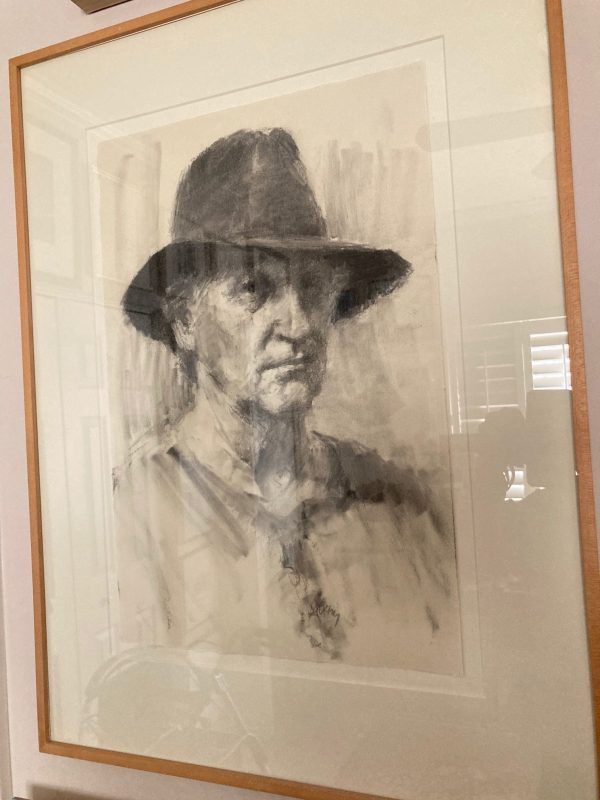
Van Camp Kondos remembered how much her husband, born in 1923 in Massachusetts to Greek immigrant parents, enjoyed food native to his family’s country of origin.
“He loved Greek cooking. He got to where he didn’t like meat anymore, but boy did he like — as we call it in the Greek, ‘macaron-eh!’”
The name of this pasta dish bursts forth from Van Camp Kondos’ lips with a tone of happy vibrance. According to Van Camp Kondos, Gregory’s skills in the kitchen occasionally needed a boost, recalling a phone conversation she once overheard.
“He called his sister once [and asked], ‘How long should I cook this macaroni?’
‘12-15 minutes.’
‘Three hours is too long?’
‘Only if you wanted wallpaper,’” Van Camp Kondos said, smiling. “Everyone had fun.”
Kondos is survived by his wife of 25 years, Moni Van Camp Kondos, his son Steve and his daughter Valorie. According to his widow, Kondos is buried with his first wife Rosie, who died in 1985.
“The Bee said we were married for 25 years—yes, legally. But, I was collecting alimony for five years, and it was going to be cut in half if we got married. Gregory said, ‘I can live in sin.’ I said, ‘OK! So can I.’”
Kondos’ paintings are part of museum collections around the world, including the Crocker Art Museum, and earned him much recognition for his talent and technique. After moving with his family to Sacramento in the late 1920s and attending Sacramento Junior College in the early 1940s, he spent 27 years as an art professor at City College, retiring in 1982.
“Greogry Kondos first joined our Panther family as a student, before pursuing his passion for art and going on to complete a master’s degree at Sac State,” City College President Michael Gutierrez said in a news release. “He returned to SCC to teach in 1956 and was instrumental in the creation of the campus art gallery which was renamed in honor of Kondos in 1983.”
Gutierrez called Kondos “a lifelong learner,” noting that Kondos held a belief that making mistakes is important.
“Kondos passed along his passion for art,” said Gutierrez. “He won’t only be remembered for his iconic work, but for the lessons he learned and shared along the way.”
In addition to Kondos, two other major forces in the art world established their roots at City College. Kondos often credited painter Wayne Thiebaud, who turned 100 last November and also taught art at City College, as a major influence and friend, as well as Dalkey.
“I’ve known Greg since about 1961. We were close,” Dalkey said “He was an interesting guy. He was a very passionate person.”
Dalkey recalled that when he was Kondos’s student in the early 1960s, Dalkey was only 25.
“I took a design class and also an oil painting class from him when I was a student at City College,” Dalkey remembered. “He used to paint in class. He had his easel and his canvas. The classes were very small at that time, typically about 10 people. It was a good opportunity to see a real professional working and what it meant to be a part of that creative spirit.”
Before becoming an instructor at City College, Kondos taught art at Elk Grove High School for three years. According to Van Camp Kondos, the school recently honored her husband by naming him Best Teacher.
According to Dalkey, Thiebaud recruited Kondos to join the faculty of the art department at City College when Thiebaud went on sabbatical. Dalkey said his own entry into City College mirrored Kondos’s.
“I was finishing up my master’s at Sac State and he was going to go on a sabbatical to Greece. He asked me if I could fill in for his classes for the semester he’d be on sabbatical. Initially, I was an adjunct professor, and in 1980, I went on to full-time,” Dalkey said. “After I filled in for him, I went on to just teaching a couple of evening classes, particularly figure drawing and painting classes. They never got rid of me. I was there for 40 years!”
Van Camp Kondos said that, when Kondos initially planned the family trip to Greece, he’d considered retiring. Members of the art department soon convinced him to instead take a sabbatical.
“He brought a little Volkswagen back from Greece,” Van Camp Kondos said. “He painted a California licence plate [on it] to get from New York to California. No one ever stopped him.”
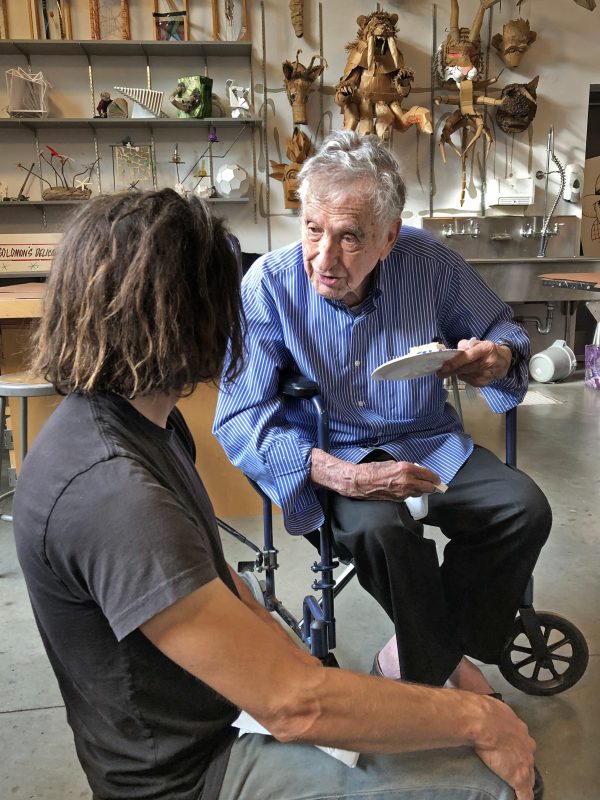
Chris Daubert, a recently retired City College art instructor, who served as director of the Kondos Gallery for 15 years, said that Kondos’s Greek heritage played a major part in his lifestyle and work. He said there are a lot of well established families of Greek origin in the Sacramento area.
“One of the neat things is that he was part of the larger Greek community. He took fabulous pictures of Greek landscapes,” Daubert said. “He was part of that culture as well, so people had an infinity for both his work and part of his landscapes were from Greece. I think the Greek community here really appreciated that as well.”
When Moni Van Camp was first introduced to Kondos, she said she found him on the arm of former president of The Crocker Art Museum’s Board of Trustees Anne McHenry.
“She brought him to this opening at the Nut Tree and introduced me to Gregory Kondos, and I bowed,” Van Camp Kondos said. “He found me three days later.”
People who knew the couple describe their relationship as fun and playful. Victoria Dalkey, who is married to Fred Dalkey and was an art critic for The Sacramento Bee from 1984–2020, knew Kondos professionally and socially. She interviewed Kondos several times, but she said she especially enjoyed her talk with him when the Crocker Art Museum featured his work in a retrospective show.
“It was the best interview I did with Greg. He was very forthcoming,” Victoria said. “At one point he said, ‘You know, I’m a loner,’ and about 10 minutes later he said, ‘I’m a people person.’ He was both!”
She described Kondos and his wife as a “vibrant, flamboyant couple.”
“We love Greg and Moni. We’d known Moni for years — and, of course, Greg. Greg’s first wife Rosie died, and it really took a toll on him. Moni came along and they just meshed.”
Fred Dalkey said Moni Van Camp was an art agent, which gave them a path to come together.
“Greg provided her work to sell—also, I did—so she was working that way professionally, which is probably how they first met.”
Daubert recalls that Greg and Moni Kondos made a boisterous and humorous pair.
“He and his wife were a hoot. They were always bickering and battling and making jokes,” Daubert. “You could hear them coming a block away. It was always really fun, so we are very comfortable together.”
According to Daubert, Kondos was greatly responsible for the City College art gallery’s evolution into what it is now, run by Suzanne Adan and Michael Stevens.
“It was not named for him when he was running it. At the time, it was in a small little corner near the bathrooms in the library,” Daubert said. “Then he argued with the campus into giving up really valuable classroom space to make an art gallery in the art department. It was part of his baby, the department.”
Daubert said that while he was running the gallery, he would see Kondos once a month. Kondos never missed a reception, even when he had gotten much older and was unable to walk. According to Daubert, Kondos would arrive, usually with his wife pushing his wheelchair, and hold court. He loved the fact that he got to be the elder statesman.
“The main thing I remember was his generosity. He would print up posters of his famous paintings and then individually sign them to sell them at our christmas sale and donate all the funds to the art department,” Daubert said. “He would come in and do painting demonstrations between shows, set up an easel and invite the students to come in and watch him paint.”
According to Daubert, Kondos spoke of discovering his style in 1964, but that it was Kondos’ hard work and consistency that earned him recognition in the art community, in Sacramento and beyond.
“I don’t think, starting off, he intended to be popular, but it certainly worked for him, so he just kept on doing it,” Daubert said. “He had the freedom of knowing what he was doing. It was the fact that his images were presented so clearly that everybody could understand them.”
People often react to Kondos’s signature brush work, Daubert said, as well as to the recognizable landscapes of the Delta, Yosemite, the California coast and wine country that Kondos depicted in his paintings.
“When you stand in front of one of his paintings, it is so obviously there, and when you are able to recognize that it’s ‘Oh, it is also local.’ People just really enjoy that,” Daubert said.
And the city of Sacramento paid the artist a special tribute some years ago.
“He lived on Gregory Kondos Alley where they built a townhouse, and his basement studio was there,” Daubert said. “Everybody knew him. He really enjoyed just being a part of the community.”

Daubert recalls that while Kondos painted mostly landscapes, he also did portraits and “some beautiful still lifes.”
“In an interesting way he was the perfect self-made man, even though he really credits his education at City,” he said.
“He had arrived at his signature style quite early and he kept on improving on it. He had fabulous self confidence about his work. He kept on going with it and it shows up in the painting. He was above all else a painter. He developed his own style and he ran with [it].”
But for all his fame and success, Gregory Kondos identified with the college and the gallery that bears his name, according to Daubert, maintaining lifelong connections with former colleagues and students.
“He defined himself as being both a student and a professor at Sacramento City College,” said Daubert.
After 25 years of marriage, his widow recognizes that her husband’s absence will be a challenge to navigate.
“It’s hard being here now without Greg and only memories. It’s hard,” said Van Camp Kondos. “He was 97. [He died a] week before he was going to be 98. The hospice people said, ‘Tell him just to wait a week more until his birthday.’”
Still, Van Camp Kondos shows great appreciation for her bountiful life with her husband as they traveled from their home in Sacramento to ones in Santa Fe, Pacific Grove and in France. She also remembers a man with a constant instinct to create art.
“I would drive, and Greg would draw all the landscapes. That was our life,” Van Camp Kondos said. “We would drive over to Aix-en-Provence so Greg could paint Cézanne’s Mont Sainte-Victoire. We always had five or six canvases in the back end of the car. He would only put the charcoal on. It’s a la Cézanne, who was kind of his mentor. Greg would [later] fill in with his own colors according to the season.
“Leslie Toms [a Sacramento painter and former student] told me she had a long talk with him before he passed away, and he told her that he was looking forward to meeting Cézanne. That sounds so much like Greg.”


